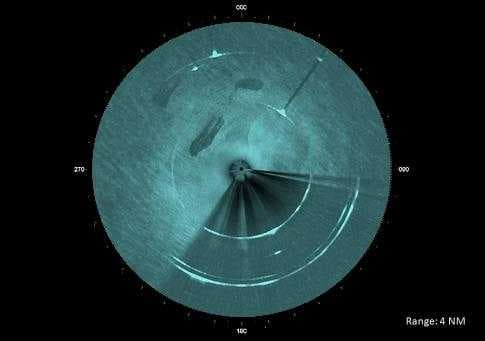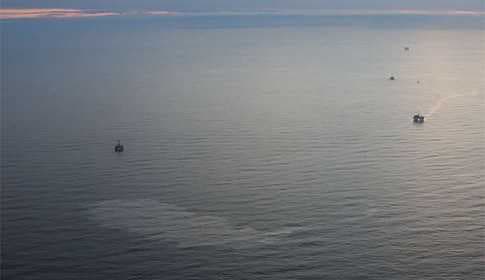Sea-Hawk Radar can detect Oil slicks on the surface, in addition to debrief from shipping in harbours and refineries.
Time spilled = oil spilled
Night view – of course
The image shows three oil slicks in the water. This was part of an exercice in the North Sea, where oil was deliberately poured to the sea in order to detect the spill, follow the spreading, and finally collect the oil.

Behind the scene
If you are looking for very detailed surface detection for your vessel or for your offshore location, a polarimetric radar antenna should be the solution for you. That is what Sea-Hawk radars are exclusively equipped with.
Sea-Hawk can detect the surface within the radar horizon, displaying it similarly to an unusually detailed aerial photo. We bring radar detection to a new level, which you could only dream about until recently.

The surface is constantly changing. The Sea-Hawk radar displays oil and dispersants, lenses and small work boats simultaneously, thanks to the multi polarized radar and advanced display system. Polarization is the key. The varying distribution of oil on the surface and the different kinds of small targets will produce different radar reflections and hence, different presentations on the radar screen.
If we add windy weather to the scenario described above, with sea-state 4 or higher, surface detection becomes more important. An oil spill quickly becomes more hazardous as the oil spreads faster.
It has been verified that a polarimetric Sea-Hawk radar is able to detect anything on the surface at a much longer distance than a standard navigation radar. The reason for our polarimetric radar’s superior detection ability is the combined utilization of different polarizations (horizontal, vertical and circular), while standard navigation radars only utilize horizontal polarization. Furthermore, we are able to process the background clutter from the antenna, and the turbulence and fluctuations naturally produced by the sea.
In calm weather a vertical polarized antenna is superior for surface detection. The surface echoes are significantly stronger in the vertical plane than in the horizontal plane utilized in ordinary X-band radars.
We have verified that Sea-Hawk will detect an extremely thin skim of oil or chemicals, also in calm weather. Again it is the capability to use the sea clutter information that comes to play here.
If oil is spilled in the sea, a Sea-Hawk radar will detect it.